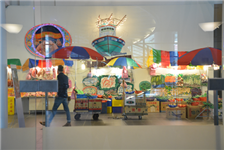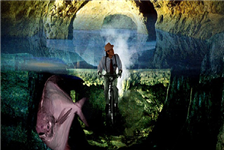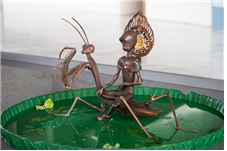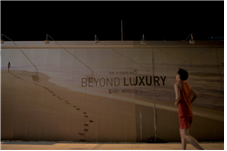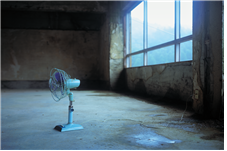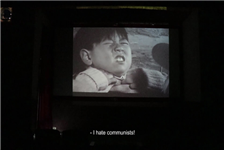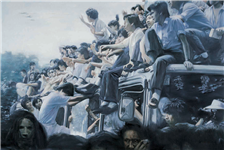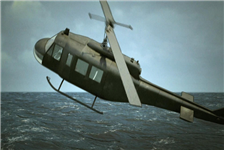asia in Asia – Close by far away drums
asia in Asia – CLOSE BY FAR AWAY DRUMS
Drums are external sounds for personal or group awakening. Drums that roll down and shout are good news to announce the danger. To those who live everyday, the sound of a drum in my ears one day becomes a warning sound. Each person who listens to the drums draws different behaviors through different thinking circuits for each environment. The faint drums from afar may be the alarms of things directly related to me, which actually touch the skin near where I live. It is up to each individual to listen to, hear, or act on these drums, but the artists who gather here in Asia hear, awaken, and act. Those who seem to know each other well in a close region of Asia, but who have no knowledge at all, are close and far. The tightness between closeness and distance is visible in asia in Asia.
In the last century, the majority of countries that are considered Asia have experienced moderni zation through the process of colonization and liberation. These extreme political and social changes produced intense state violence, which resulted in democratization movements, in order restore peace and order. Although it may perturb some people to say it this way, in the last 100 years the Asian region has experienced extremely swift modernization and within that same period it has experienced premodernization, modernization and post-modernization. This is a hugely important clue to understanding Asian-ness. On the other hand, this view has been criticized for leading to misunderstandings based on hasty generalizations and the diversity of the Asian region being overlooked. Therefore, in this exhibition, we have tried to unravel the stories about Asia in the actual place that we are living, and not get buried in the popular concept of Asia that is being propagated in contemporary Korea. In a nutshell, the aim of this exhibition is to expose the real Asia that lies hidden under the Asia label. To put it in another way, we are searching for the singular, small-letter asias that form capital letter Asia. So how can we find those numerous individual asias and what is the standard by which to define them? Out of the many different methods available, we chose to look at interpretations/circumstances /incidences in the political sphere of each individual region.
Of course, there are political incidents in all regions however, the political events that have occu rred in the Asian region over the last 100 years seem to have been more dynamic and involved more complicated relationships. Therefore ‘asia in Asia – Close by far away drums’ is not reconstructing Asia from a state level, but a regional level. In the words of the artists who are constructing the communications network across society, we are going to meet Asia. This is the reason that we have archived and displayed the details of activists’ and artistic groups’ activity by societies in individual regions. We also plan to include the works of ten artists who visualize the stories of (politics/society) in these regions.
Tang Tang-Fa
Contemporary art continues to explore what art is. As a result, contemporary art tends to be dif ficult to understand or even bore the general public. Tang Tang Fa is cognizant of this problem and tries to ensure that art allows anyone to feel the joy of life, even if they are not highly knowledgeable about it. In his series “Market,” the artist’s awareness of this problem is extremely tangible. He reproduces market streets and stalls and also the goods on display at Taipei markets. On a torn off canvas, he dramatically creates an exciting space, using a variety of materials to create fake goods that he displays on a market stall.
The replica market stall is only make-believe but the work allows you to feel the vibrancy, fun and vitality of the market. Tang Tang Fa, visited Masan at the beginning of January, 2019 in order to prepare for this exhibition. He wanted to experience the difference between the markets in Masan and Taipei. When he visited the Masan Fish Market, he was extremely amazed by the shape of the monk fish after they had been gutted. In this exhibition he is planning to exhibi this art works, two different spaces– the Mason Fish Market that he has just experience dand his original work, the Taipei Market-on the first floor lobby of the art museum. We are looking forward to them arket stalls that will be unfamiliar and familiar at the same time.
Wong Hoy Cheong
This short film is based on an interview done almost 20 years ago with a survivor of prison camps during the Japanese Occupation of Malaya, World War Ⅱ. This voice recording recounts a period of how this person, now deceased, coped with imprisonment. In this interview, the person constantly shifts between pronouns – I, we, them, us – as he find ways to emotionally dissociate himself from the experience. He was calm when others were panicking. He observed ants as soldiers were executing prisoners. Using filmed live action sequences with actors, motion graphics and animation, this film explores memory and the desire to forget, lived experiences and fantastical escapes. While this film is based on a history, it is also a proverbial story of human resilience and indiscrimination in times of war where cruelty and compassion, fear and hunger often merge into inexplicability.
Yang Mao-lin
The “With Regard to Love Stories” series is divided into two parts – three tragic love stories and three comedy love stories. In the tragic love stories, I appropriated the figure of the anime series character Minerva X, who weeps each time she see Mazinger Z (Unparalleled Love of Mazinger Z), and who, in the name of love, opts to leave her home town and swaps her beautiful voice for a pair of legs, eventually mermaid disappears into the foamy sea (The Mermaid Loves King Kong). In the third of the tragic love stories, the character sacrifices his life for his love Jane atop the Empire State Building (King Kong Loves King
Kong).
Hyeong seob Cho
This work of art was created with 4 channels of videos and captures the construction of enor mously tall buildings on the beach and the movements of people beneath. Under a gigantic billboard, people performing intense gymnastic movements and disabled people moving precariously between the safety nettings of a factory suggest the nearly imperceptible way that they are about to be engulfed in a crisis. In other words, in this city that is home to these giant constructions, the performances done by these people are not human, they do not stem from people, the artist exposes the fact that these performances have been emasculated. The fact that you can’t figure out where this place, where life is bounded by huge structures and commercial billboards, is and can only conclude that it is our world, is not a coincidence. These billboards featuring pictures of apartments being constructed and whispering the promise of happiness; this myth of Atlanta, with no clear owner, starts to tower over us with the help of enormous machines. Even though this land is a concrete part of the city, the majority of its citizens are alienated and trying to extend the horizontals while constructing more verticals. The spaces that the people in this city inhabit, will be just markings on a gauge for eternity. The cities are seized by power and authority, and people mold the spaces in these systems. These uncertain wanderings are satisfied by the anticipation of paradise. People all live with their own kinds of desire to own something and this modern day delusion causes them to be caught up in their own world. And the spaces that create these delusions produce a conflict between logic and illogic, they are places where irrationality is produced. Nevertheless, pure and innocent words and lucid symbols, ingeniously avoid these conflicts. What I thought was my own is a delusion that has been instilled in me, something that I have internalized; all things that fall under the banner of truth and sincerity have taken up a place far, far away. Who will own the land, who will own the air, who will monopolize the products produced by
nature?
Area Park
One of Japan’s geographical characteristics is that it experiences many minute earth tremors, however the recent earthquake was enough to cause fear and terror on a completely different scale. The earthquake and enormous tsunami that followed a few hours later, dealing a hard blow to the northeast regions, evoked a sense of awe for nature and an awareness of how weak human beings are. It was shocking that completely
unthinkable scenes, more shocking than a blockbuster movie, were played through the TV into living rooms in real time. It was far more shocking than the 911-terror attack that I had watched on CNN when I was a post-graduate student. Three days later, I passed through congested areas, along controlled roads (from the northern region of Chiba to the northern region of Ibaraki), to the site of the tsunami. However, the practical difficulties I encountered in a landscape where everything had ground to a halt meant that I could only capture the scenes with my eyes before I had to turn around and go back.
That day as I was exploring, the ownerless photos that I saw scattered here and there on the ground, being blown around by the wind made the greatest impression on me.
The photos were torn and damaged, covered in debris and mud. They had been thrown away, cast into the foul smell. Paradoxically at that moment, rather than spurring me into thinking about the appalling scenes of natural disaster, or feeling the agony of human suffering, this became a catalyst for pondering the meaning of photos in our life. In this convenient day and age where if you just have data on a chip the size of a fingernail, you can print a thousand photos in just a few minutes. The fact that someone was stroking the damaged photo and wiping it clean was astonishing. Was this really the Japan that led the way in the evolution of brilliant digital photography.... Members of families had disappeared and it was impossible to know if they were dead or alive, houses and cars had been washed away, watches given as wedding gifts had disappeared without a trace...
but the interviews with people who were asked what they wanted to find more than anything else, who answered that they wanted to find their family photo albums more than anything else, left a lasting impression on me. Family photos. Items that nobody could ever replace. Photos.
Chen ching yao
Using a method that combines manga-like elements of illustration and traditional painting techniques, the image of young girls running with AK rifles poses a question about individual identity to the culture of uniformity created by girl groups. He alludes to the present Taiwanese political situation, and the state of civil society, depicting soldiers and students in Taiwanese society dressed in clothes worn by people of the same status, to create a unified group. By juxtaposing these images, the artist wanted to express the unilateral communication of those in power, e.g. the president and people with cultural power such as those who control the society. And he wanted to emphasize the citizens and society reflected in it.
Eunbi Kwon
What effect does history have on the individual, and what effect does the individual have on history, is an individual just an insignificant being in the face of the enormity of history?
Is an individual destined to live in accordance with the historical and political situation he finds himself in, regardless of his own personal will? What can an individual do in overwhelming historical and political situations? What can one individual in a society do as an artist? The state’s authority to rule, that is the government’s attempt at managing the people’s ideas, has always produced contradictory social phenomena. In the past, Communist and Socialist countries tried to create utopia, but they failed on numerous attempts. The collapse of the Berlin War signified the end of the cold war. They paid a cruel price for their heartbreaking attempt at realizing their ideals and their endeavors culminated in a nightmare. The result of those past failures is that even now countries in Eastern Europe still battle the “Specter of Communism.” From the Korean War to the present, we have been fighting with the specter of Communism or maybe a deformed apparition of something that is hard to even define. Especially in Korea, the National Security Law plays the role of legally and strictly managing and supervising citizens’ ideas. More than just making taboos of whatever social conventions dictate taboo, it creates a legal punishment, so citizens censor their own ideologies themselves. “One specter haunts Europe. The specter of Communism.” 150 years ago, in 1848, Marx and Engels narrated the first sentence of the Communist Manifesto, and even though the cessation of the Cold War was proclaimed in another world, this ideology that has been despised for such a long time still haunts the world. Darkness, covertness, secrecy, fragmentation, uncertainty, subtlety, triteness, anxiety, and ambiguity are created by images of the specter that exists because it doesn’t exist; the artist uses these kinds of images as a tool to play with. This symbolizes the question of how the mindset of this ideology, an invisible and intangible idea, spread across Eurasia from the west to the east. The artist suddenly began to think of the specter as “You” and willingly went through an endless series of processes over a period of a year in order to meet this being. Throughout that process he asked questions about how social awareness was constructed and how it diverged in the countries involved in the Cold War.
Chen Guang
Chen Guang’s life story is a rather unusual one for a contemporary Chinese artist; you could say there is something almost legendary about it. Growing up in a small town in Henan province, Chen loved painting and received a basic art education from middle school art classes. At that age, his study experiences were no different to the majority of Chinese artists, but because Chen yearned to leave home and make a new life for himself, he joined the army before he was even legally of age. In 1989, not long after he joined up, his unit was sent to take part in the suppression of the ‘June 4th’ prodemocracy demonstrations in Tian’anmen Square. Later, Chen was transferred to the PLA Art Academy, and went on to major in oil painting at the Central Academy of Fine Art in Beijing. After graduation he worked as a tutor to students who were preparing for the rigorous academy entrance exams, and at the same time began to practice performance art. By the end of the 1990s, Chen had made a name for himself as a performance artist in the Chinese art scene, and a few years into his career he made the crucial decision to start using his own emotional and sexual history as a mode of practice for his performance art. As a result of this, he has become one of the most controversial performance artists in China.
Dinh Q. Le
“Pishkun” is a term used by the Blackfeet American Indian referring to the site where Native Americans historically used to kill roaming bison by herding the bison, then driving them into panic, and running them over the cliff. It can also be loosely translated as “deep blood kettle”. On April 30th, 1975 as the North Vietnamese Army and the Viet Cong marching towards Saigon and other cities in Vietnam, thousands of panicking Southern Vietnamese Army, American military, and US diplomatic personnel were trying to get out of South Vietnam. Hundreds of US built helicopter were fleeing in panic toward the South China Sea, searching for US Army’s aircraft carriers to land on. Many never found the aircraft carriers and eventually they ended up in the South China Sea after running out of fuel. The helicopters that found the aircraft carriers but eventually the carriers filled up leaving hundreds of stranded helicopters hovering in the air. At some point, decisions were made and an unknown number of helicopters were pushed into the South China Sea to make room for others to land. While others just crashed into the sea as they ran out of fuel while waiting. South China Sea shows these powerful machines that have rained terror over Vietnam for so long in their last moments, crashing, struggling, flailing, sinking, and dying in the sea. These helicopters were the technology that the US military were counting on to give them the advantage to win the war. In their last moments, their failure was so spectacular. South China Sea Pishkun is a restaging of this last historical moment. With American rethinking their position and withdrawn strategy in lraq, South China Sea Pishkun is a timely revisit of this tragic event.
Duzi
The idea or concept of “reclamation” could be traced back to as early as the ancient Chinese mythology in which a bird named Jingwei was determined to fill up the sea by continuously carrying stones or twigs in her mouth and dropping them into the Eastern Sea. This kind of retaliatory madness as depicted in that tragic story of revenge can also be found with the same intensity in China’s long coastlines today. With this attitude, through hysterical policies of land expansion, the utopian fantasy of a prosperous future is being portrayed as a political strategy in the booming economic development process. Mass consumption, capital investment and political power have also served as the fuels for such act. Extended seawalls and sandbags stretch at lengths already exceeding those of the Great Wall as large sections of wetlands and red woods have now become industrial development zones, ports, technological parks, vacation resorts, artificial beaches and exotic ocean view homes.
Zhang Wei
It is similar to the characters creating in online role playing games. By re-combining my portraitures from ordinary people’s facial features, I bestowed them mythology. —Those people’s original social identities were desalinated by those famous figures. And those figures’ “acting” became more absurd. Thus, the atmosphere of politics and culture was dispelled by this combination. It became a farther inquiring of individual identity and values.
Pier-2 Art Center
The Kaohsiung City Bureau of Cultural Affairs took over the Pier-2 Art Center in 2006, starting a series of exhibitions and festivals such as the Kaohsiung Design Festival, the Chinese Character Exhibition, Kaohsiung International Steel & Iron Sculpture Festival, Kaohsiung International Container Art Festival, “Here comes the Kaohsiungers”, Mega Port Festival, The Wall Moon Theatre, Kaohsiung Youth Innovative Design Exhibition, Intertidal Region, Point & Wavy Ribbon Formation Performance Season etc. Every performance and exhibition filled the city with creative vibes injecting new life to the Pier-2 Art Center.
In doing so, the center has continuously been presenting avant-garde perceptions and appear ances, while building this port city into an attractive cultural and living hub.
Hantoo Art Group
the Hantoo Art Group Established in 1998, as one of the most active and important artist groups in Taiwan today, the Hantoo Art Group (hereafter Hantoo) has a history spanning 20 years, and had developed over the course of 35 years as the 101 Modern Art Group(1982), Taipei Progressive Art Group(1983), Ban-Niao Art Group(1983), and Taipei Art Group(1985). The trend of forming art groups in the ‘80s gave way to the rise of alternative spaces and individualism in the ‘90s. While other arts collectives gradually dissolved, Hantoo reassembled in an era of rising individualism and is precisely a reflection of this contemporaneity of the collective experience. By forming a collective, Hantoo becomes heir to a future that resulted from the recombined ethos of a number of collectives in the 80s.
Art Together Limited
Established in 2008 and currently a charitable organization, Art Together is a non-profit art group based in Hong Kong. We mainly work on art projects and exhibitions at outdoor area and public space in Hong Kong, in an attempt to reach different communities in a mobile fashion. We collaborate with different education units, local art groups, artists, and social service groups to launch art workshops, artist talks and activities in order to support local art development and bring artistic ideas to different communities. Examples include “Art for Survival” rolled out mobile art installations onto streets in Hong Kong in 2009; “Talk 3.Talk 4” hosted at the West Kowloon waterfront promenade in 2012 invited art practitioners for quality discussion; “Tape Go Go” made use of the enclosing walls around Cattle Depot Artist Village for tape art mural in 2013; “In Search of the Coastline” invited artists and art students to have art parade along the old harbour coastline in 2014, and “Once Upon a Goose” exhibited comic art underneath the Goose Neck Bridge in 2015.
Space Heem
In 2014, space heem, a not-for-profit art space, which is located in the vicinity of Busan’s Paldo Market, opened with its first exhibition, “Rooftop Politics.” Space heem was created as a space for art and politics. It was created by and is run by designers and artists, who wanted a space to use art to express the reasons for society’s problems. Space heem plans to host a variety of programs including exhibitions, seminars and lectures and concentrate on supporting and collaborating with artists and designers who create works that are critical of today’s society or works that sensitively capture things that exist within our society that have not been expressed in a visual medium.
TENTACLES Gallery
TENTACLES is an art initiative founded in 2014. Tentacles focus on providing platform for emerging and experimental creative practitioners by hosting regular exhibitions and residency program for artists and researchers looking to spend time in Bangkok, to focus on their practices, as well as engage with local communities. Tentacles also act as a venue for collaboration and exchange of ideas in the wider social and cultural fields, by organising events such as seminars, artist’s talks, film screening. We collaborate with partner organisations in Thailand and overseas, to facilitate cultural exchange programmes.
Koganecho Area Management Center
Koganecho Bazaar is an art festival hosted by the Koganecho Management Center, an NPO that uses art to revitalize the Yokohama City Naka Ward Koganecho urban area.
With the city's everyday spaces as a stage, the festival has been held every autumn since 2008, and to present organizers have invited a total of 90 groups of artists, curators, and architects from Japan and abroad. With an organization plan that considers creation to presentation as a consecutive process, the festival examines current issues raised by contemporary art. As main part of our program to revitalize the area, the Artist-in- Residence (AIR) program utilizes the small shop spaces and new art studios beneath the Keikyu Line train tracks, providing opportunities for promising Japanese and international artists.
